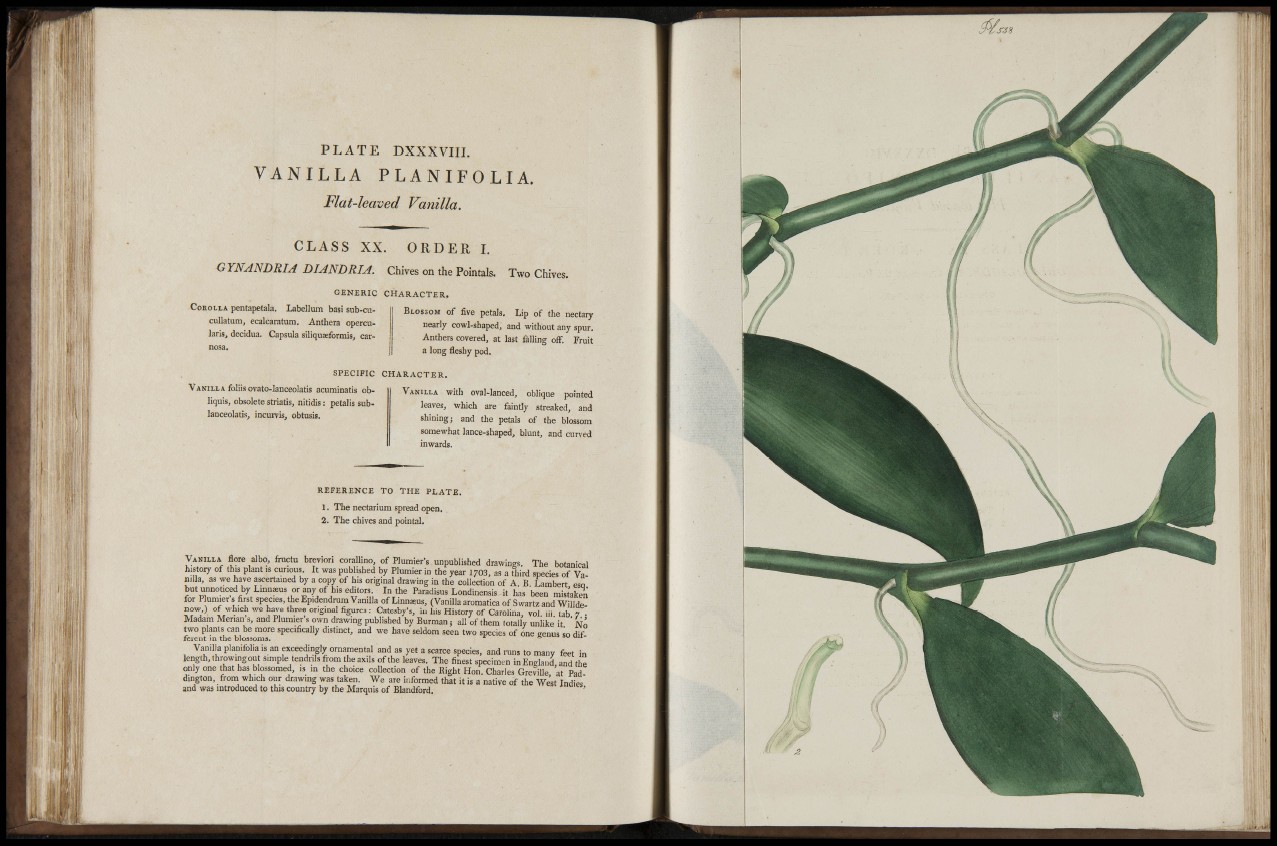
1';
li-«!'!'' it; "ir'ii .;.,
i'ih
P L A T E DXXXVIIL
V A N I L L A PLANIFOLIA.
Flat-leaved Vanilla.
C L A S S XX. ORDER I.
GYNANDRU DIANDRIA. Chives on the Pointals. Two Chives.
GENERIC CHARACTER.
COROLLA pentapetala. Labellum basi sub-cucullatum,
ecalcaratum. Anthera opercularis,
decidua. Capsula siliquaeformis, carnosa.
BLOSSOM of five petals. Lip of the nectary
nearly cowl-shaped, and without any spur.
Anthers covered, at last falling off. Fruit
a long fleshy pod.
SPECIFIC CHARACTER.
VANiLiAfoliisovato-lanceolatis acuminatis obliquis,
obsolete striatis, nitidis : petalis sublanceolatis,
incurviSj obtusis.
VANILLA with oval-lanced, oblique pointed
leaves, which are faintly streaked, and
shining J and the petals of the blossom
somewhat lance-shaped, blunt, and curved
inwards.
REFERENCE TO THE PLATE.
1. The nectarium spread open.
2. The chives and pointal.
V A N I L L A flore albo, frnctu breviori corallino, of Plumier's unpublished drawings. The botanical
histoiy of this plant is curious. It was published by Plumier in the year 1703, as a third species of Va
nilla, as we have ascertained by a copy of his original drawing in the collection of A. B Lambert esa"
but unnoüced by Linnaeus or any of his editors. In the Paradisus Londinensis it has been mistaken
for Plumier s first species, the Epidendrum Vanilla of Linnseus, (Vanilla aromatica of Swartz and Willdenow
) of which we have three original figures: Catesby's, in his History of Carolina vol lii tab 7 •
Madam Menan s, and Plumier's own drawing published by Burman; all of them totally unlike it ' No
two plants can be more specifically distinct, and we have seldom seen two species of one genus ¿0 dif
ferent m the blossoms. 0
Vanilla planifolia is an exceedingly ornamental and as yet a scarce species, and runs to many feet in
leiigth, throwingout simple tendrils from the axils of the leaves. The finest specimen inEngland, and the
only one that has blossomed, is m die choice collection of the Eight Hon. Charles Greville at Pad
dington, from which our drawing was taken. We are informed that it is a native of the West Indie,"
and was introduced to this country by the Marquis of Blandford
r m
Yi iiMÌ
Si ': 1
; i !,
Hi
;
, ' ; i: i
il'iii
^ ,. . »
.1 •• •• tT